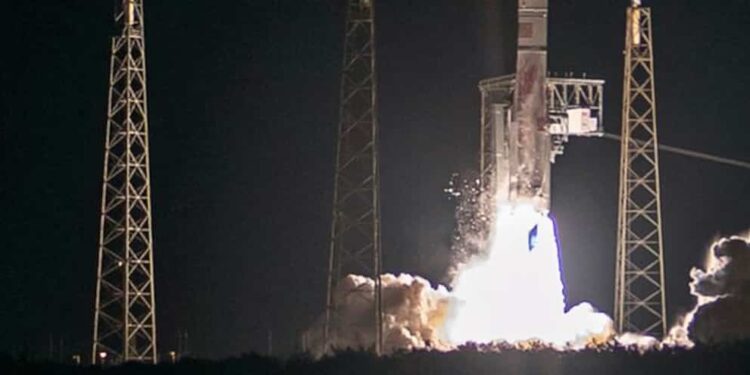The first landing of an American spacecraft on the Moon in more than 50 years will probably have to wait: a private lander encountered an “anomaly” shortly after takeoff on Monday, and is now losing fuel in flight, the company Astrobotic said having developed it.
The lander took off before dawn on Monday from Florida, aboard the new Vulcan Centaur rocket from the ULA group, which brings together Boeing and Lockheed Martin.
The device, named Peregrine, was powered up shortly after separation from the rocket, and communication was successfully established.
But “unfortunately, an anomaly occurred,” Astrobotic explained in a statement on X. This prevented the company from reorienting the device towards the Sun, so that it could recharge its batteries using its solar panels.
The company then explained that the problem “probably” resulted from a problem with the propulsion system.
“If so,” it “jeopardizes the spacecraft’s ability to land on the Moon,” the company said.
An “improvised maneuver” was carried out to reorient the solar panels towards the Sun, allowing the batteries to start charging again.
But the failure of the propulsion system causes “a critical loss” of fuel, Astrobotic then added.
“Teams are working to stabilize this loss, but given the situation, we have given priority to maximizing” the scientific data that can be collected, the company said. “We are currently evaluating what alternative mission profiles would be possible at this time.”
Peregrine was developed by Astrobotic with the support of NASA, which commissioned the company to transport scientific equipment to the Moon – a $108 million contract.
“Each mission is an opportunity to learn,” NASA responded on X.
Astrobotic hoped to become the first company to successfully land on the Moon. The moon landing attempt was scheduled for February 23.
In recent years, Israeli and Japanese companies have also attempted to land on the moon, but these missions ended in crashes.
“Leading America’s return to the surface of the Moon, for the first time since Apollo, is an immense honor,” Astrobotic boss John Thornton said at a press conference on Friday. However, he said he was aware of the risks of failure.
Human ashes
The intended landing site for the machine was located on the visible side of the Moon, near mysterious domes formed by lava but which scientists struggle to explain.
Thanks to the instruments sent, NASA was to study the composition of the surface, as well as the radiation.
Studying the lunar environment should notably make it possible to prepare for the return of astronauts to the Moon, which NASA is planning with its Artemis program.
But NASA is not the only client on board, and the mission has also caused controversy: among the cargoes of private clients transported are the ashes or DNA of dozens of people, including those of the creator of the famous series science fiction television Star Trek, Gene Roddenberry. A partnership with the Celestis company, specializing in “commemorative spaceflights”.
Sending these ashes to the Moon aroused the anger of the Navajo Native American tribe, which denounced the “desecration of a sacred place” for “many Native American cultures”, without however obtaining the postponement of the launch.
Lunar economy
The launch inaugurated a series of missions supported by the American space agency, eager to encourage the development of a true lunar economy.
A failure of the mission will not fail to raise questions about this new strategy from NASA, which wishes to rely partly on the private sector for its lunar ambitions.
It has therefore signed a contract with several companies, including Astrobotic, to send scientific equipment to the Moon. The program, called CLPS, provides companies with crucial financing.
Another selected company, Intuitive Machines, is also scheduled to launch for the Moon in mid-February with a SpaceX rocket.
This should allow NASA “to make the trip more often, more quickly and for less money,” explained Joel Kearns, a senior official within the space agency.
“The success of all attempts is not assured,” he admitted. “What we have asked of the industry is very difficult to do.”
To date, only the United States, the Soviet Union, China and India have successfully landed a device on the Moon.
A mission from the Japanese space agency (Jaxa) is also due to attempt to land on the moon in about two weeks. Russia, for its part, spectacularly missed a moon landing this summer.



